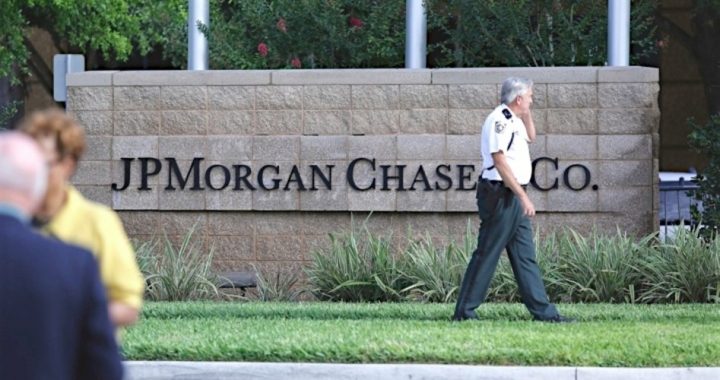
When the New York Times reported that the losses resulting from the failed trade made by JP Morgan Chase (JPM) earlier this year could reach $9 billion instead of the $2 billion initially reported, some said it didn’t matter, while others called for more regulations. Few considered that such trades, and consequent losses, were inevitable and would likely continue because of the implied taxpayer backstop.
First, it should be noted that, contrary to JPM CEO Jamie Dimon’s statement that the trade was due to “errors, sloppiness and bad judgment,” and was “flawed, complex, poorly reviewed, poorly executed and poorly monitored,” the people in JPM’s London office knew exactly what they were doing. Furthermore, Dimon was aware of what they were doing, was warned in advance of potential losses, and did nothing about it.
The people in the London office of JPM that executed the series of trades were the best and the brightest in the business. Ina Drew, the chief investment officer for JPM, was considered “one of the best managers of balance-sheet risks” and was applauded by an outside money manager, who called her “an amazing investor [who has] done a really good job over a lot of years.” She reported directly to Dimon who often flew to London in order to stay current on her office’s trades. When she resigned she took with her a $14-million paycheck.
The other key player in the London office, Bruno Iksil, was known in the trading community as the “London Whale” for his outsized and bold bets with company money. In 2011 his aggressive trades, approaching $1 billion, earned JPM $450 million.
But when he began putting on trades late last year, using margin and derivatives to multiply his leverage, he got the attention of senior management. One senior manager looked into what the “whale” was doing and recommended that the firm create a separate reserve account to offset any losses he might incur if one of his bets went south. His recommendation was ignored, and soon after that the “whale’s” trades went south.
The trades were complicated, involving bond index funds, but in essence Iksil bet the farm on the idea that bond prices would move in a certain direction. He took so many trades, using so much leverage, that when his bets started going against him, other traders piled on, taking positions against him. As Felix Salmon wrote in Reuters:
Whenever a trader has a large and known position, the market is almost certain to move violently against that trader — and that seems to be exactly what happened here…
Once your positions become public knowledge, the market will smell blood.
Some tried to put the losses into perspective. After all, JP Morgan has total assets of $2.3 trillion, a net worth of $190 billion, and earned $25 billion last year. What’s $2 billion — or $9 billion for that matter — compared to that? In any event, as Chief Executive magazine put it: “The loss will be borne by JPMorganChase’s shareholders, not by depositors, creditors, customers or more to the point, and most important — not by taxpayers.” In fact, a number of chief executive officers meeting at a recent Yale CEO Summit asked: Why all the fuss over such a trivial matter? Specifically,
Why is public attention focused on a $2 billion nominal loss when both the government and media are stone silent over the $4 trillion loss represented by Fannie Mae and Freddie Mac, the twin darlings that precipitated the financial collapse in the first place?
To date there have been no hearings and no one at either institution has been indicted…
There is at least one good reason. JPMorgan sucked up nearly $390 billion from the Fed as the financial collapse occurred. And the reason for that was that JPM was “too big to fail” thus creating the moral hazard that Dimon and his “whale” were manipulating for the bank’s benefit. After all, if there is no real “downside” risk, why not pile on? The fact that JPM could eat this trade is beside the point.
In reviewing the matter, two highly regarded commentators came up with the same solution: Put the risk back into the game and let the participants enjoy the rewards and suffer the losses and leave the taxpayers and their guarantees — real or implied — out of the equation altogether. Gerald O’Driscoll, writing for The Freeman, said:
Large financial institutions will continue taking on excessive risks so long as they now they can offload the losses onto the taxpayers, if needed…
Until that discipline is reintroduced, there will be more financial bets going bad at these banks.
It’s the deadly combination of high risk and no punishment that leads to trouble. If that trouble is large enough to threaten the existence of a bank as large as JP Morgan, then the taxpayer will ever be holding the bag. But if the gambling division is separated from the banking division, then losses will be limited, and such highly risky trades are less likely to occur. As O’Driscoll noted:
In the past I have dubbed today’s banking practice of placing dangerous financial bets “casino banking.” It differs little from the activities conducted at gaming tables in Las Vegas and has little or no reference to the fundamentally healthy activity of matching viable businesses with capital and credit.
Lew Rockwell agrees. Every bank that has depositors’ money should tend to its knitting: securing those deposits, investing them conservatively, and concentrating on serving their customers. Banks that want to invest their own funds — not customers’ money — should be free to do so, but separately and without taxpayer backup. That way, says Rockwell, “The end result is that banks would be banks…” and casinos would be casinos, and never the twain would meet.
Photo: Hillsborough Sheriff deputy patrols outside the gate of JP Morgan Chase annual stockholders meeting held on May 15, 2012, in Tampa, Fla. : AP Images



